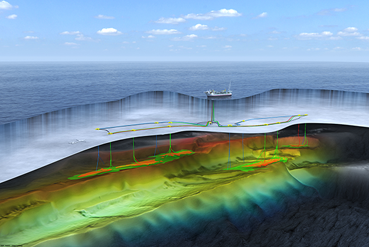The plan for development and operation of the Johan Castberg field in the Barents Sea was approved by the Norwegian Parliament on Monday 11 June. The plan will now be submitted to the Ministry of Petroleum and Energy for formal approval.
“This is a great day for the project and for the licence partners. After all, this is the first development plan to be approved for Equinor! And it is not any project either. It was a long road for Johan Castberg after the first discovery in 2011. Today we have a solid project that will be central in the further development of the northern regions,” says Margareth Øvrum, Equinor’s executive vice president for Technology, Projects and Drilling.
With first oil scheduled for 2022, the field has a production horizon of 30 years. Capital expenditures for the project are NOK 49 billion, and recoverable resources are estimated at 450-650 million barrels of oil equivalent. The field development consists of a production vessel and a comprehensive subsea system, including a total of 30 wells distributed on 10 templates and 2 satellite structures. This is currently the largest subsea field under development globally.
“The project is on schedule, and gradually we will see the results of the construction work. Many yards and companies across the country will be busy with Johan Castberg deliveries in the years to come,” says Knut Gjertsen, project director for Johan Castberg.
We could not take for granted that the project would be realizable when the oil price dropped in 2014. The original capital expenditures were estimated at more than NOK 100 billion and the break-even oil price was above USD 80 per barrel.
The project has worked hard together with suppliers and partners, they have changed the concept and found new solutions for realizing the development. Today the project is profitable at an oil price below USD 35 per barrel.
The Johan Castberg field will have a supply and helicopter base in Hammerfest and an operations organisation in Harstad. The costs of operating the field are estimated at some NOK 1.15 billion per year, representing around 1700 man-years nationwide, some 500 of which will be performed in Northern Norway. This includes both direct and indirect spinoffs.
Equinor and the other operators with oil deposits in the Barents Sea are looking at the possibilities of oil transfer at Veidnes in Finnmark county, including both a downscaled terminal solution and ship-to-ship transfer.
The Johan Castberg partnership consists of Equinor (operator 50%), Eni Norge (30%) and Petoro (20%).

Image source: Equinor
Background
The Johan Castberg field development project’s resource base consists of the three oil discoveries Skrugard, Havis and Drivis, located in PL 532.
To achieve profitability in the project after the fall in the oil price in 2014-15, Statoil and the partners had to change the design concept and develop new solutions in order to be able to carry out the development.
DEVELOPMENT SOLUTION
The field will be developed with an FPSO+ production vessel with additional subsea soluitions. Compared with the original solution, costs have been reduced from approximately 100 billion NOK to 50 billion. At sea level, the FPSO will be visible—but it is under water that the true size of the field is seen. Castberg is a large subsea field, and is key to the possible further development and infrastructure in the Barents Sea.
EVALUATE THE ECONOMICS OF AN OIL TERMINAL AT VEIDNES
The Johan Castberg licence will also spend more time investigating the possibility of realising a stand-alone oil terminal on Veidnes. An onshore terminal could also be an alternative in combination with offshore oil offloading. However, there are significant differences in costs between a concept based on bringing the oil to shore in a pipeline and a concept based on offshore oil offloading. Statoil and its partners will therefore continue to work to optimise opportunities in the area and the timing of project activities. An investment decision on a possible terminal will be made in 2019.
Johan Castberg is a breakthrough in unexplored areas where we must interact with other interests, such as the fisheries. At the same time, this is a development which will have ripple effects including an impact on technology and expertise building in the supplier industry - particularly in the north.
- The Statoil-operated discoveries Skrugard from 2011, Havis from 2012 and Drivis from 2014 comprise what is now the Johan Castberg project.
- The proven volumes in Johan Castberg are estimated at between 400 and 650 million barrels of oil
- Location: Situated approx. 100 kilometres north of the Snøhvit-field in the Barents Sea in blocks 7219/9 and 7220/4,5,7, about 100 km north of the Snøhvit field, 150 km from Goliat and nearly 240 km from Melkøya. The water depth is 360-390 meters, 7 km between Skrugard and Havis
- The discoveries: Skrugard April 2011, Havis January 2012, Drivis May 2014
 KEYFACT Energy
KEYFACT Energy